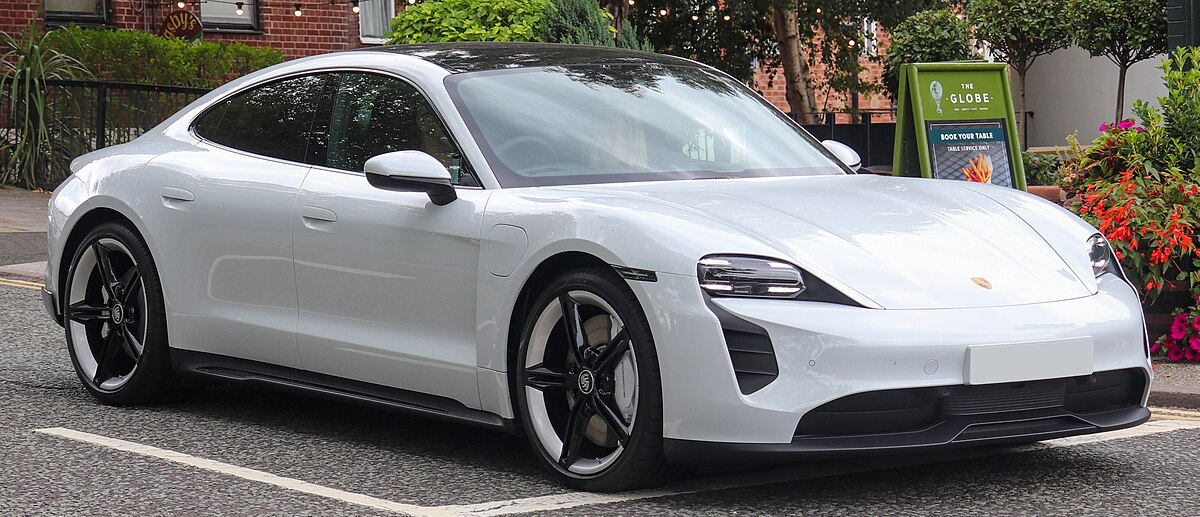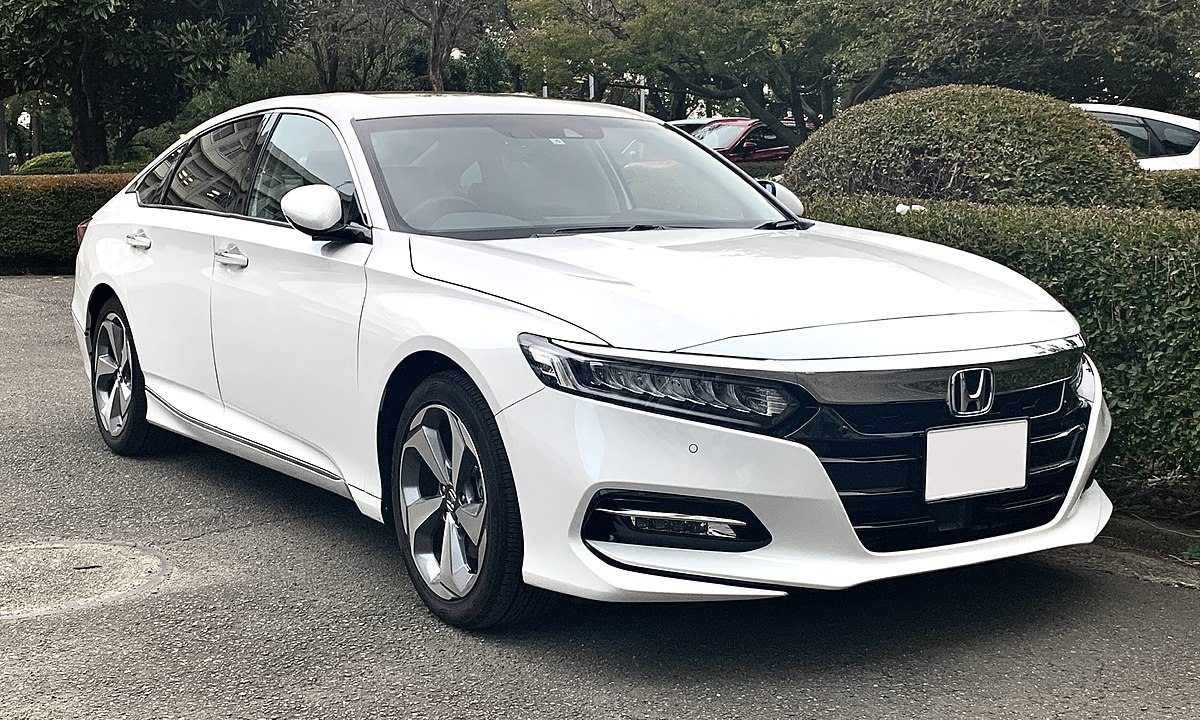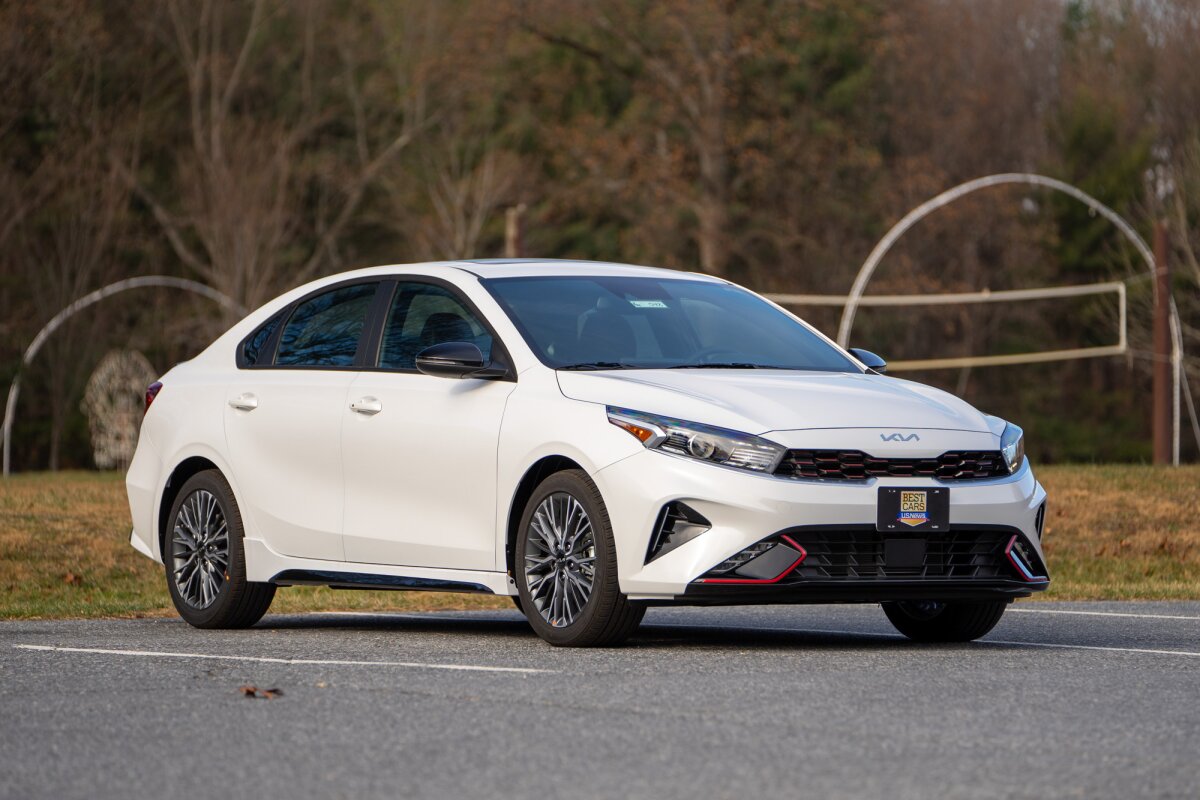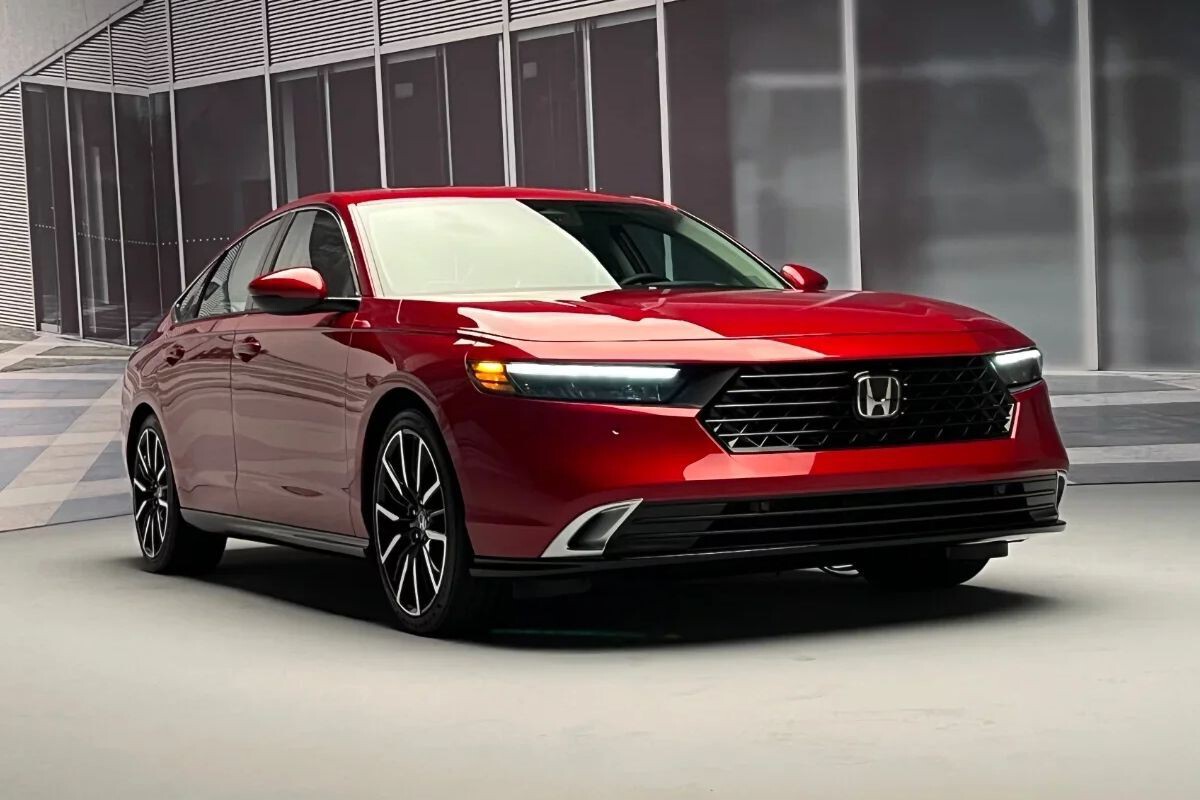Vehicle theft remains a persistent problem across America, with a motor vehicle stolen every 37 seconds in the United States in 2024. However, national car thefts dropped by 17 percent to 850,708 in 2024, indicating some progress in anti-theft technologies and awareness.
Understanding which vehicles thieves target and which they avoid can help consumers make informed decisions when purchasing a car. The automotive industry has undergone significant evolution in terms of security features, creating a clear distinction between vehicles that are easy targets and those that present formidable challenges to criminals.
Modern anti-theft systems, advanced electronics, and sophisticated tracking technologies have made certain vehicles virtually impenetrable to theft attempts.
Meanwhile, other vehicles, particularly those lacking basic security features or having widely available parts, continue to attract criminal attention. Midsize luxury SUVs and electric vehicles have the lowest theft rates and are the hardest cars to steal, while certain models from specific manufacturers consistently appear on most-stolen lists.
The reasons behind these patterns involve a complex interplay of factors, including security technology, parts availability, market demand, and ease of theft execution.
This comprehensive analysis examines ten vehicles that represent the extremes of automotive security, revealing why some cars are left untouched by thieves while others become prime targets for chop shops and criminal enterprises nationwide.
5 Cars Thieves Avoid
These vehicles combine multiple deterrent factors that make them unattractive targets for both opportunistic thieves and organized crime rings seeking profitable opportunities.
The Tesla Model 3 electric 4-door stands out with only two thefts out of 191,000 insured vehicles, representing exceptional theft resistance due to advanced security systems, unique electric drivetrain components with limited resale markets, and sophisticated tracking capabilities that make successful theft nearly impossible.
Brightly colored vehicles, particularly pink cars, are the least likely to get stolen because their distinctive appearance makes them easily identifiable and difficult to resell without attracting unwanted attention from law enforcement and potential buyers.
Electric vehicles in general present complex challenges for thieves due to specialized knowledge requirements for operation and maintenance, limited black market demand for electric components, and integrated security systems that are difficult to bypass without manufacturer-specific tools and expertise that most criminals lack completely.
1. Tesla Model S
The Tesla Model S stands as a fortress against vehicle theft, representing the pinnacle of automotive security technology. Tesla cars are exceedingly difficult to steal because of features such as GPS tracking and Sentry Mode, a security feature that protects the EVs from theft.
The vehicle’s comprehensive security ecosystem creates multiple layers of protection that make theft attempts extremely challenging and high-risk for criminals.
Sentry Mode transforms the Model S into a mobile surveillance system, utilizing the car’s eight cameras to monitor its surroundings continuously. When suspicious activity is detected, the system automatically begins recording, activates the car’s alarm, and displays warning messages on the touchscreen. This feature alone serves as a powerful deterrent, as thieves prefer to operate undetected and avoid leaving evidence of their activities.
The Model S’s advanced connectivity features create additional security barriers. The vehicle’s constant connection to Tesla’s network means any unauthorized access attempts are immediately flagged and can trigger alerts to both the owner and Tesla’s security systems.

The car’s location is continuously tracked, making it nearly impossible for thieves to hide the vehicle after theft. Even if someone manages to gain physical access, the complex software architecture prevents traditional hot-wiring techniques.
Tesla’s over-the-air update capability means security features are continuously enhanced, and new protection measures can be deployed instantly across the entire fleet.
This dynamic security approach keeps thieves from developing reliable methods to defeat the system, as the security landscape is constantly evolving.
The vehicle’s unique charging requirements and specialized parts also limit its appeal to chop shops, as stolen Tesla components have limited resale markets compared to traditional vehicles.
The Model S’s keyless entry system, while convenient, includes sophisticated encryption that prevents relay attacks and signal amplification techniques commonly used against other luxury vehicles.
The mobile app integration allows owners to monitor their vehicle’s status remotely, receive instant notifications of any security events, and even disable the vehicle remotely if theft is suspected.
2. BMW i8
The BMW i8 represents a unique combination of exotic appeal and theft-resistant design that makes it an unlikely target for most criminals. This plug-in hybrid sports car’s complex drivetrain, specialized components, and limited market presence create significant barriers for potential thieves.
The i8’s sophisticated electronic systems and advanced materials make it a challenging vehicle to steal and an even more difficult one to profitably dismantle.
The i8’s carbon fiber construction and aluminum space frame require specialized knowledge and equipment to disassemble, making it unappealing to typical chop shop operations.
The vehicle’s hybrid drivetrain combines a turbocharged three-cylinder engine with an electric motor, creating a complex system that requires specific expertise to service or part out.
This complexity extends to the vehicle’s electronic systems, which integrate multiple control units that are difficult to bypass or replicate. BMW’s sophisticated anti-theft systems in the i8 include advanced engine immobilization technology that prevents unauthorized starting even with physical key access.

The vehicle’s ConnectedDrive services provide comprehensive tracking and remote monitoring capabilities, allowing BMW and law enforcement to locate stolen vehicles quickly.
The i8’s distinctive appearance and limited production numbers make it extremely difficult to hide or resell, as law enforcement and enthusiasts are highly familiar with the model.
The specialized nature of i8 components creates limited aftermarket demand, reducing the profitability of theft. The vehicle’s doors, body panels, and interior components are unique to the model and cannot be easily substituted with parts from other BMW models.
This specificity means stolen i8 parts have a very narrow market, making the risk-reward ratio unfavorable for thieves. The i8’s advanced driver assistance systems and multiple sensors create additional security layers.
The vehicle’s parking assist systems, cameras, and ultrasonic sensors can detect unauthorized approach and activity, providing early warning systems for potential theft attempts. The complexity of these systems also means that any damage during theft attempts often renders the vehicle significantly less valuable.
3. Porsche Taycan
Porsche’s first fully electric vehicle, the Taycan, incorporates military-grade security features that make it one of the most theft-resistant vehicles on the market.
The combination of Porsche’s traditional attention to security and cutting-edge electric vehicle technology creates a formidable barrier against theft attempts.
The Taycan’s advanced electronic architecture and unique operating systems present challenges that most thieves are simply not equipped to handle.
The Taycan’s advanced keyless entry system employs sophisticated encryption and anti-relay technology that prevents the signal amplification attacks commonly used against luxury vehicles.
Porsche has incorporated multiple authentication layers that verify key legitimacy through various electronic signatures and rolling codes that are virtually impossible to duplicate or intercept.
The system’s frequency-hopping capabilities and advanced cryptographic protocols make unauthorized access extremely difficult. Porsche Connect services provide comprehensive vehicle monitoring and tracking capabilities that extend far beyond basic GPS location.
The system monitors vehicle status, charging activities, and access attempts, providing real-time alerts to owners and Porsche’s security network. The Taycan’s constant connectivity means any unusual activity triggers immediate notifications and can initiate automated responses, including vehicle immobilization.

The electric drivetrain architecture creates unique challenges for thieves accustomed to traditional internal combustion engines. The high-voltage battery systems require specialized knowledge and safety equipment to handle safely, deterring most criminals who lack the technical expertise to work with electric vehicle components.
The Taycan’s sophisticated battery management system also makes it difficult to bypass or manipulate the vehicle’s power systems. Porsche’s reputation for advanced security extends to the Taycan’s physical design, with reinforced door frames, advanced locking mechanisms, and tamper-resistant electronic systems.
The vehicle’s construction incorporates multiple security features that are integrated into the basic architecture, making them difficult to defeat without causing significant damage that reduces the vehicle’s value.
The specialized nature of Taycan components and the limited aftermarket for electric vehicle parts make theft less profitable. The vehicle’s unique charging port, specialized tires, and electric drivetrain components have limited resale value in traditional automotive theft markets, reducing the incentive for criminal activity.
4. Mercedes-Benz G-Class
The Mercedes-Benz G-Class, while appearing rugged and potentially vulnerable due to its utilitarian design origins, actually incorporates some of the most advanced anti-theft technology in the luxury SUV segment.
Mercedes-Benz has equipped the G-Class with sophisticated security systems that leverage both traditional mechanical protection and cutting-edge electronic countermeasures to create a highly secure vehicle.
The G-Class features Mercedes-Benz’s Anti-Theft Protection Package, which includes advanced engine immobilization technology that requires multiple authentication steps to start the vehicle.
The system employs encrypted communication between the key fob, ignition system, and engine control units, creating a complex authentication chain that is extremely difficult to bypass.
Even with physical access to the vehicle, starting the engine without proper authentication is virtually impossible. The vehicle’s robust construction, while designed for off-road capability, also provides excellent theft resistance.
The G-Class features reinforced door frames, advanced locking mechanisms, and tamper-resistant access points that require significant time and noise to breach.
The vehicle’s high ground clearance and solid construction make it difficult to access vulnerable components that thieves typically target for quick theft attempts.

Mercedes-Benz’s mbrace connected services provide comprehensive vehicle monitoring and tracking capabilities that extend the G-Class’s security beyond physical barriers.
The system can track vehicle location in real-time, monitor access attempts, and provide remote immobilization capabilities if theft is suspected. The connected services also enable automatic crash notification and emergency assistance, creating additional layers of monitoring that deter theft attempts.
The G-Class’s distinctive appearance and high profile make it difficult to hide after theft, as the vehicle is easily recognizable and draws attention in most environments.
This visibility factor, combined with the vehicle’s high value and luxury status, means stolen G-Class vehicles are quickly reported to law enforcement and are actively searched for, creating additional risk for thieves.
The specialized nature of G-Class components and the vehicle’s luxury market positioning create limited aftermarket demand for stolen parts. The vehicle’s unique styling elements, specialized off-road components, and luxury interior materials require specific expertise to remove and resell, making the theft process more complex and time-consuming than thieves prefer.
Also Read: 5 Cars That Alert Owners Instantly and 5 That Say Nothing Until It’s Too Late
5. Audi e-tron GT
The Audi e-tron GT represents the convergence of luxury, performance, and advanced security technology in Audi’s electric vehicle portfolio. This sophisticated electric grand tourer incorporates multiple layers of theft protection that leverage both traditional security measures and cutting-edge electric vehicle technology.
The e-tron GT’s advanced electronic architecture and unique operating requirements create significant barriers for potential thieves. Audi’s advanced key technology in the e-tron GT employs sophisticated encryption and anti-relay features that prevent unauthorized access through signal amplification or key cloning techniques.
The system requires physical proximity authentication and incorporates multiple verification steps that make unauthorized entry extremely difficult. The key’s integration with the vehicle’s electrical systems means that even with physical access, starting the vehicle requires proper electronic authentication.
The e-tron GT’s electric drivetrain presents unique challenges for thieves accustomed to traditional vehicles. The high-voltage electrical systems require specialized knowledge and safety equipment to handle, deterring most criminals who lack the technical expertise to work with electric vehicle components safely.
The vehicle’s sophisticated battery management and charging systems also make it difficult to operate without proper authentication and system initialization.

Audi Connect services provide comprehensive vehicle monitoring that extends far beyond basic tracking capabilities. The system monitors charging activities, vehicle access attempts, and operational status, providing real-time alerts to owners and Audi’s security network.
The e-tron GT’s constant connectivity means any unauthorized activity triggers immediate notifications and can initiate automated security responses.
The vehicle’s construction incorporates advanced materials and design elements that enhance security while supporting performance objectives. The e-tron GT’s carbon fiber components and aluminum construction require specialized tools and knowledge to work with, making dismantling for parts both difficult and less profitable.
The vehicle’s integrated design means many components are interconnected and cannot be easily removed without damaging other systems. The limited aftermarket for electric vehicle components creates additional theft deterrence, as stolen e-tron GT parts have narrow resale markets compared to traditional luxury vehicles.
The vehicle’s specialized charging equipment, unique battery systems, and electric drivetrain components require specific expertise to install and operate, limiting the potential market for stolen components.
5 Cars on Every Chop Shop List
High-value luxury vehicles dominate chop shop target lists because their premium components command exceptional prices in illegal parts markets where demand consistently exceeds supply from legitimate sources.
High-value cars, including Porsches, Mercedes and BMWs were stolen from various parts of the UK by thieves operating sophisticated networks that can quickly dismantle vehicles into valuable components worth hundreds of thousands of dollars.
Chop shops focus on selling body panels more than engine components, making vehicles with expensive exterior parts particularly attractive targets for criminal enterprises seeking maximum profit margins.
SUVs have become increasingly targeted as the cost of SUV parts has risen faster than other car types, with brake discs and pads up 37% compared to 22% for hatchbacks, while pollen filters increased 48% versus 41% for other vehicle types, creating lucrative opportunities for illegal parts trafficking operations.
1. Honda Civic
The Honda Civic consistently ranks among America’s most stolen vehicles, earning its place as a primary target for thieves and chop shop operations nationwide.
The vehicles with the most thefts like the Honda Accord, Honda Civic, and Ford F-150 represent the most sought-after targets in the automotive theft market. The Civic’s popularity stems from a combination of factors that make it an ideal target for criminal enterprises.
The Civic’s widespread popularity creates enormous demand for both complete vehicles and individual components in the used car and parts markets. With millions of Civics on American roads spanning multiple generations, the demand for replacement parts remains consistently high.
This market demand translates directly into profitability for theft operations, as stolen Civic parts can be quickly and easily sold through various channels including online marketplaces, salvage yards, and unauthorized repair shops.
Older Civic models, particularly those from the 1990s and early 2000s, lack modern anti-theft technology that makes newer vehicles more difficult to steal.
These vehicles often have basic mechanical locks, simple ignition systems, and minimal electronic security features that can be defeated with readily available tools and techniques. The simplicity of these older systems means that experienced thieves can steal a Civic in a matter of minutes with minimal risk of detection.

The Civic’s design philosophy emphasizes reliability and serviceability, which unfortunately also makes it easier for thieves to access valuable components.
The engine bay layout, suspension components, and exhaust systems are designed for easy maintenance access, which also facilitates quick removal by criminals.
Popular aftermarket modifications for Civics, such as performance exhausts, wheels, and engine components, create additional target opportunities for thieves seeking high-value items.
Honda’s reputation for long-lasting, reliable engines means that Civic powertrains retain their value well into high-mileage scenarios. Stolen Civic engines, transmissions, and other drivetrain components can be sold to customers seeking affordable replacement parts for their vehicles.
The interchangeability of parts between Civic model years also increases the marketability of stolen components. The Civic’s compact size and relatively light weight make it easier to steal and transport than larger vehicles.
Thieves can quickly load Civics onto trailers or move them to secure locations for dismantling. The vehicle’s size also allows for easier concealment during the theft process and subsequent transportation to chop shop facilities.
2. Honda Accord
The Honda Accord represents another prime target in the vehicle theft landscape, consistently appearing on stolen vehicle lists across the United States.
The Accord’s combination of popularity, reliability, and parts demand creates a perfect storm of factors that make it highly attractive to criminal organizations.
The vehicle’s widespread presence on American roads ensures a steady supply of targets for thieves while maintaining strong demand for both complete vehicles and individual components.
The Accord’s market position as a mainstream family sedan means that replacement parts are in constant demand across the used car market. Engine components, transmissions, body panels, and interior parts from stolen Accords can be quickly integrated into the legitimate parts market, making detection difficult for law enforcement.
The vehicle’s reputation for reliability means that even high-mileage Accord components retain significant value, creating profitable opportunities for theft operations.
Older Accord models suffer from the same security vulnerabilities as their Civic siblings, with basic anti-theft systems that can be easily defeated by experienced criminals.
The widespread availability of information about bypassing Honda security systems, combined with the simplicity of older ignition and locking mechanisms, makes Accord theft a relatively low-risk, high-reward activity for criminals.

The Accord’s larger size compared to the Civic provides additional opportunities for valuable component theft. The vehicle’s more spacious engine bay houses more substantial components that command higher prices in the aftermarket.
Accord catalytic converters, in particular, have become prime targets due to their high precious metal content and relatively easy access under the vehicle.
Honda’s parts interchangeability across model years and sometimes even between Accord and Civic models increases the marketability of stolen components.
A single stolen Accord can provide parts that fit multiple model years and sometimes related Honda models, maximizing the profitability of each theft operation.
This versatility makes Accord theft particularly attractive to organized criminal enterprises. The Accord’s popularity in the used car market also creates opportunities for title washing and vehicle identity fraud.
Stolen Accords can be given new identities using titles from salvaged or damaged vehicles, allowing criminals to sell complete stolen vehicles as legitimate used cars. The vehicle’s common appearance makes it difficult for buyers to identify stolen vehicles without proper documentation verification.
3. Ford F-150
The Ford F-150 holds the distinction of being America’s best-selling pickup truck for decades, a popularity that unfortunately translates into high theft rates and strong demand in chop shop operations.
The F-150’s combination of widespread availability, high value, and strong parts demand makes it an ideal target for various types of automotive crime, from simple joyriding to sophisticated organized theft operations.
The F-150’s dominance in the pickup truck market creates enormous demand for replacement parts, particularly given the vehicle’s use in commercial applications where downtime is costly.
Fleet operators, construction companies, and individual owners require quick access to replacement parts, creating a ready market for stolen F-150 components. The truck’s robust construction means that even heavily used parts retain significant value in the aftermarket.
Older F-150 models, particularly those from the 1990s and early 2000s, often lack advanced anti-theft systems that would deter criminal activity. These trucks were built during an era when security features were minimal, relying primarily on basic mechanical locks and simple ignition systems.
The availability of master keys and lock-picking techniques specific to Ford vehicles makes unauthorized access relatively straightforward for experienced thieves.

The F-150’s design for utility and serviceability, unfortunately, also facilitates theft of valuable components. The truck’s high ground clearance provides easy access to catalytic converters, which contain valuable precious metals and can be removed quickly with basic tools.
The open engine bay design allows for rapid removal of engines, transmissions, and other valuable drivetrain components. Ford’s strategy of maintaining parts compatibility across multiple model years increases the marketability of stolen F-150 components.
A single stolen truck can provide parts that fit numerous model years and trim levels, maximizing the profit potential for each theft operation. This interchangeability extends to body panels, interior components, and mechanical systems.
The F-150’s popularity in rural and suburban areas often means these vehicles are parked in less secure locations, such as driveways, parking lots, or job sites, where theft opportunities are more abundant.
The truck’s common appearance in work environments also provides cover for thieves, as F-150s are expected to be present in construction sites, parking lots, and other locations where criminal activity might otherwise seem suspicious.
4. Hyundai Elantra
The Hyundai Elantra has gained notoriety in recent years as one of the most targeted vehicles for theft, particularly among younger criminals who have learned to exploit specific vulnerabilities in certain model years.
Many older Hyundai and Kia vehicles lack electronic immobilizers that prevent thieves from simply breaking in and bypassing the ignition, creating significant security vulnerabilities that have been widely publicized through social media and other channels.
The Elantra’s theft problem stems primarily from design decisions made to reduce manufacturing costs in certain model years. Vehicles equipped with traditional turn-key ignitions rather than push-button start systems often lack the engine immobilizer technology that has become standard on most other manufacturers’ vehicles.
This absence of basic security features makes these Elantras vulnerable to theft techniques that were common decades ago but have been largely eliminated in modern vehicles.
The viral nature of Hyundai theft techniques on social media platforms has created widespread awareness of these vulnerabilities among potential criminals.
Videos demonstrating how to steal certain Hyundai models using simple tools like USB cables have circulated widely, creating a phenomenon where vehicle theft techniques are being shared and learned by individuals who might not have otherwise engaged in criminal activity.

The Elantra’s position as an affordable, popular compact sedan means it’s commonly found in areas with higher crime rates and less secure parking situations.
College campuses, apartment complexes, and urban areas with limited secure parking often have numerous Elantras that present easy targets for criminals armed with knowledge of the vehicle’s security weaknesses.
The demographic that typically purchases Elantras often includes young adults and first-time car buyers who may be less aware of security precautions or less able to afford additional anti-theft devices.
This creates a situation where vulnerable vehicles are owned by individuals who may not take additional security measures that could deter theft attempts.
Hyundai’s response to the theft problem has included software updates and security kits for affected vehicles, but the implementation has been uneven, and many vulnerable vehicles remain on the roads without proper security upgrades.
The company’s legal battles and public relations challenges related to the theft issue have created additional publicity that may inadvertently encourage more criminal activity.
5. Kia Forte
The Kia Forte shares many of the same security vulnerabilities that have made its corporate sibling, the Hyundai Elantra, a prime target for vehicle thieves.
Like many Hyundai models, certain Kia Forte model years lack basic engine immobilizer technology, creating significant security gaps that criminals have learned to exploit.
The Forte’s theft problem represents a broader issue affecting multiple Kia models that were manufactured without adequate anti-theft protection.
The Forte’s vulnerability stems from the same cost-cutting measures that affected various Hyundai models, where engine immobilizers were not installed as standard equipment on vehicles with traditional keyed ignitions.
This design decision, made to reduce manufacturing costs and vehicle prices, created a significant security weakness that has been widely exploited by criminals across the United States.
The social media phenomenon that has driven increased theft of vulnerable Hyundai and Kia models has particularly impacted the Forte, as the vehicle’s popularity among younger demographics overlaps with the age groups most likely to encounter theft techniques through online platforms.
The viral nature of these theft methods has created an unprecedented situation where vehicle security vulnerabilities are being rapidly disseminated to potential criminals.

Kia’s marketing strategy has emphasized affordability and value, attracting customers who may be purchasing their first vehicle or operating on limited budgets.
This demographic often faces challenges in implementing additional security measures or parking in secure locations, creating situations where vulnerable vehicles are left in exposed locations that facilitate theft attempts.
The Forte’s design shares platform elements with other Kia and Hyundai models, meaning that theft techniques that work on one model often apply to related vehicles.
This cross-model vulnerability has created a situation where criminals who learn to steal one type of vehicle can quickly adapt their techniques to target multiple models from both manufacturers.
The ongoing legal and regulatory responses to the Kia and Hyundai theft crisis have created additional publicity that may inadvertently encourage criminal activity.
While manufacturers have developed software updates and security retrofits, the implementation has been slow and inconsistent, leaving many vulnerable vehicles on the roads without adequate protection.
The Forte’s popularity in urban areas and among younger drivers often results in these vehicles being parked in less secure locations such as street parking, apartment complexes, and college campuses, where theft opportunities are more abundant.
The vehicle’s common appearance and widespread presence also provide cover for thieves, as Fortes are expected to be present in most parking environments, making suspicious activity around these vehicles less likely to be noticed or reported.
Also Read: 5 Cars With Smart Alarms That Actually Work and 5 That Never Go Off

